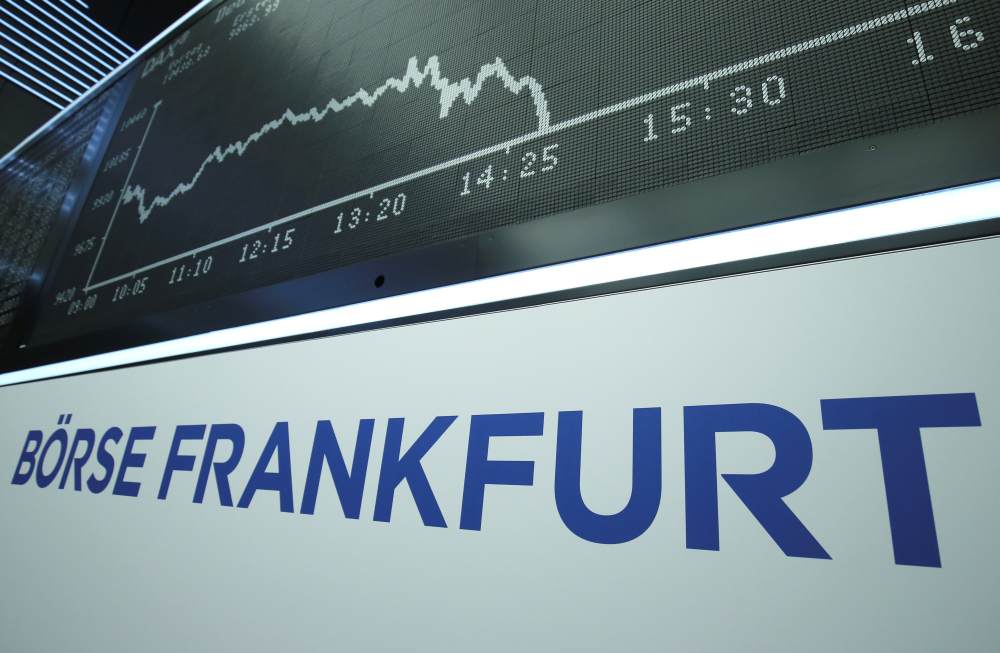NEW YORK, March 26 ― The dollar slid and global equity markets marched higher yesterday for a second day of gains, on optimism US$2 trillion (RM8.87 trillion) in US fiscal stimulus will dampen the economic shock the coronavirus pandemic has started to inflict.
US senators will vote Wednesday. Top aides to Republican President Donald Trump and senior Republican and Democrat senators agreed on the unprecedented bill after five days of marathon talks.
Hopes that the bill, which amounts to nearly half the US$4.7 trillion the US government spends annually, will ease an expected recession lifted world stock indexes for back-to-back gains for the first time since markets sold off a month ago.
Europe's main markets in London, Frankfurt and Paris struggled to stay positive after ripping 4 per cent -5 per cent higher. Oil prices swung from 3 per cent up to 3 per cent down. Wall Street also teetered, though the Dow industrials and S&P 500 mostly remained more than 1 per cent higher while the Nasdaq closed lower.
The Dow Jones Industrial Average soared more than 11 per cent on Tuesday in its biggest single-day percentage gain since 1933 and the benchmark S&P 500 jumped 9.4 per cent ― its tenth biggest daily gain on record since a daily data series started in 1927.
The stimulus package marks progress but the devil is in the details, said Ron Temple, head of US equity at Lazard Asset Management in New York. The legislation is not available to read to know how it will be executed or when money arrives at households and small businesses gain access to funding, he said.
“This is not the all-clear; it's just material progress,” Temple said.
“Until we know we can go back to work safely, that we can go to restaurants and go to stores and engage with other humans in close proximity, I don't think you can make an economic or a market call. It's premature to be trying to call the bottom.”
The stimulus includes a US$500 billion fund to help hard-hit industries and a comparable amount for direct payments of up to US$3,000 apiece to millions of US families.
It will also include US$350 billion for small-business loans, US$250 billion for expanded unemployment aid and at least US$100 billion for hospitals and related health systems.
Countries that have locked down their populations to prevent the spread of the coronavirus need to use the time to find and attack the virus, the World Health Organization said.
As the United States works to screen thousands for the coronavirus, a new blood test offers the chance to find out who may have immunity. That could be a game changer in the battle to contain infections and get the economy back on track.
Over 450,000 people have been infected globally and more than 20,000 have died, according to a Reuters tally.
Data yesterday pointed to a fast-slowing economy that analysts said signaled the United States already is in recession.
New orders for key US-made capital goods fell sharply in February as demand for machinery and other products slumped, suggesting a deepening contraction in business investment.
The benchmark S&P 500 is still nearly US$8 trillion below its mid-February high, and investors expect more sharp swings.
MSCI's gauge of stocks across the globe gained 2.88 per cent and emerging market stocks rose 4.40 per cent.
The pan-European STOXX 600 index rose 3.09 per cent.
The Dow Jones Industrial Average rose 495.64 points, or 2.39 per cent, to 21,200.55. The S&P 500 gained 28.23 points, or 1.15 per cent, to 2,475.56 and the Nasdaq Composite dropped 33.56 points, or 0.45 per cent, to 7,384.30.
In the currency markets, the dollar slipped for a third straight session as a scramble for liquidity was soothed by the super-sized US stimulus plan.
The dollar index fell 0.757 per cent, with the euro up 0.92 per cent to US$1.0886. The Japanese yen strengthened 0.03 per cent versus the greenback at 111.20 per dollar.
The risk-sensitive Australian dollar jumped over the 60-US cent mark for the first time in a week.
Bond markets were also calmer. Benchmark US Treasuries were yielding 0.7987 per cent while in Europe Germany's 10-year yield edged a basis point higher to -0.296 per cent, tailed by other higher-rated government debt.,
European Central Bank chief Christine Lagarde asked euro zone finance ministers during a videoconference on Tuesday to seriously consider a one-off joint debt issue of “coronabonds”, officials told Reuters.
In metals markets, gold changed hands at US$1,608.78 an ounce , retaining most of Tuesday's gains of almost 5 per cent, its biggest jump since 2008.
US crude prices rose slightly, bolstered by progress on a massive pending US economic stimulus package.
Brent crude gained 24 cents to settle at US$27.39 a barrel. US crude futures rose 48 cents to settle at US$24.49 a barrel.
US gold futures settled 1.5 per cent lower at US$1,634.90 an ounce, a day after posting their biggest one-day jump since 2009. ― Reuters






















